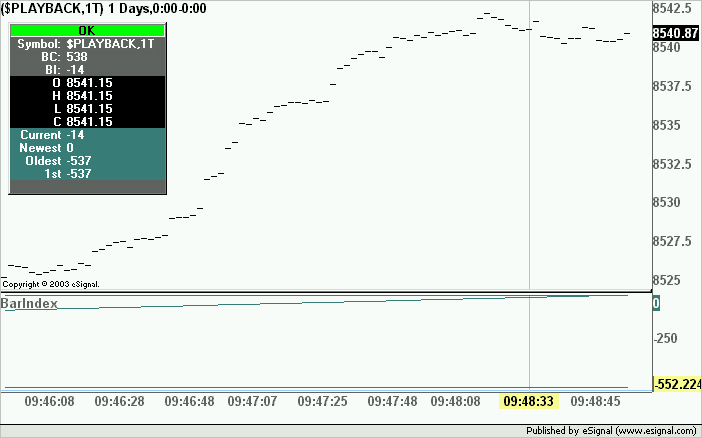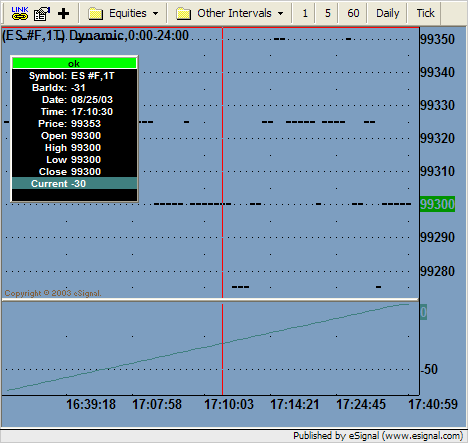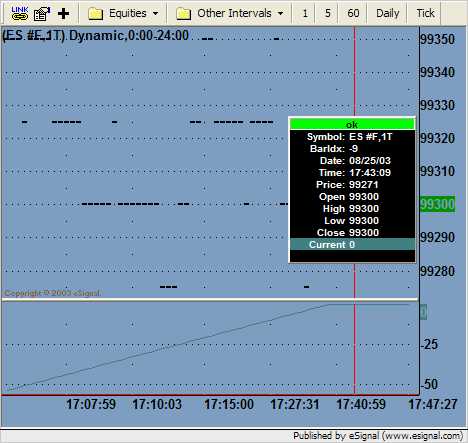I have noticed that the function getCurrentBarIndex() returns bar index the same as getNewestBarIndex() , which is 0, for dynamic tick charting. So this is not correct current bar index. For example, a bar - which is 10 bars from the newest bar (the bar on the right edge of the chart) - should have the current bar index of -10. The getCurrentBarIndex() returns 0 !!!!. My plots on tick chart therefore have been all distorted !!!
However, for static charting (no coming tick data), getCurrentBarIndex() returns correct bar indices after reloading the efs. And the appearance of the plots now are as expected.
Dzung Nguyen
However, for static charting (no coming tick data), getCurrentBarIndex() returns correct bar indices after reloading the efs. And the appearance of the plots now are as expected.
Dzung Nguyen



Comment